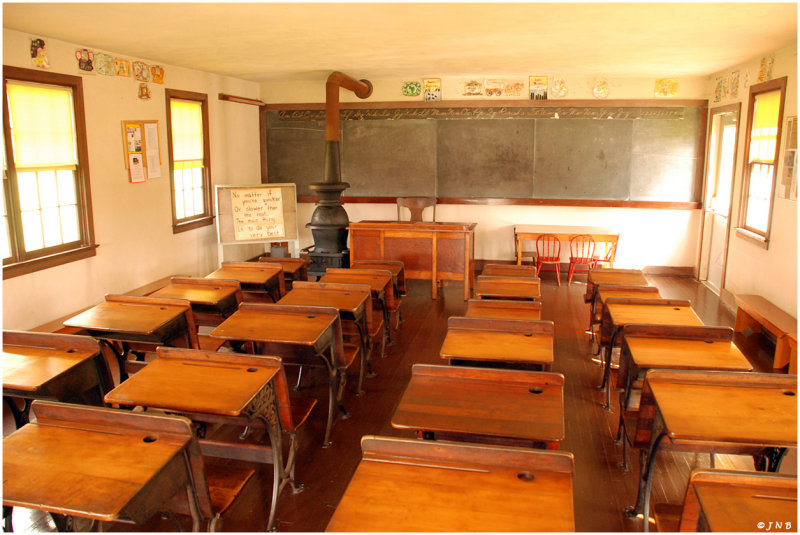.jpg)
In the heart of America’s rural landscapes, the Amish community thrives, preserving a way of life that stands in quiet contrast to the fast-paced modern world. Central to their enduring culture is the unique approach to education—a system that intertwines traditional values with practical learning.
Because Amish children avoid public systems and schools, they must attend private schools within their community to further their education. This is a necessary step in the development of every young boy and girl. As you can expect, though, there are some distinguishable differences between traditional schooling and that within an Amish community.
Historical Context of Amish Education
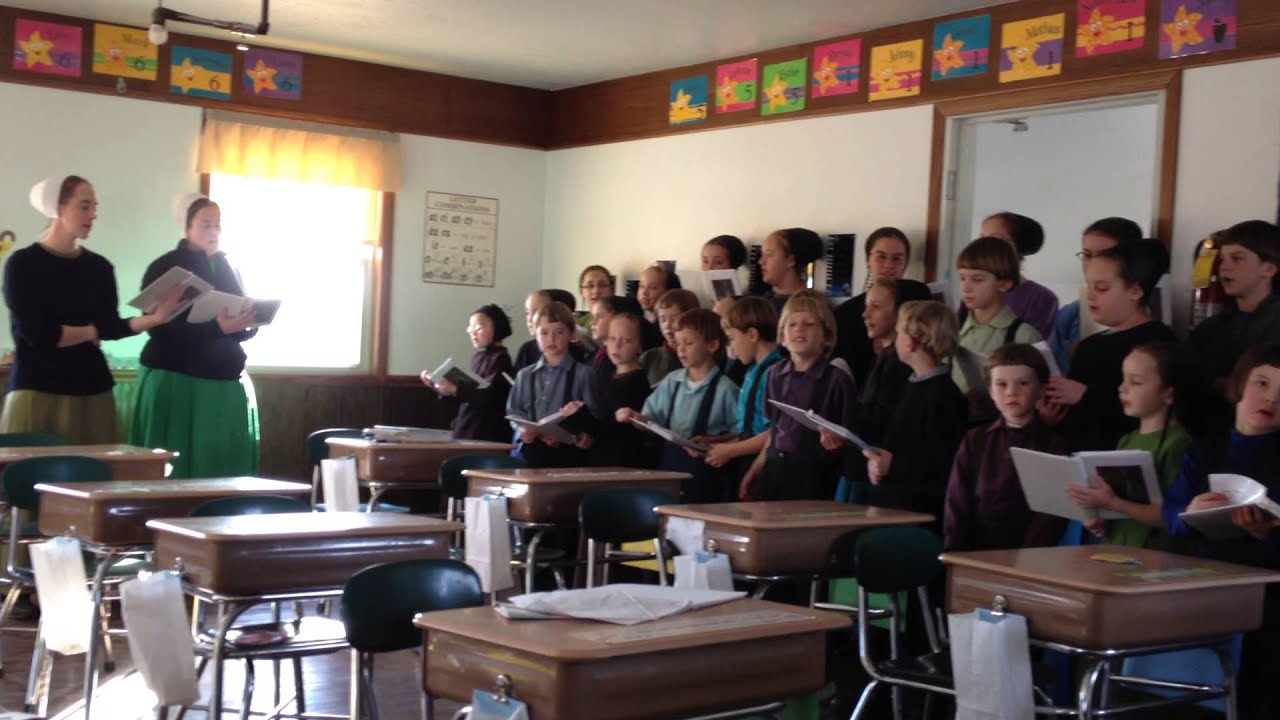
Education is highly valued within the Amish culture, as it is seen as a means to preserve their faith and way of life. Incorporating practical skills training into their education system is crucial for the Amish.
They believe that education shouldn’t only focus on academic knowledge but also provide hands-on training in practical skills such as farming, carpentry, and homemaking. This emphasis on practical skills training ensures that each community member can contribute effectively to the overall functioning of their society.
The integration of faith and education is another crucial aspect of Amish education. For them, faith permeates every aspect of life, including education. The Amish believe that all knowledge should be filtered through a religious lens and that it should reinforce their religious beliefs and practices.
Overall, despite living by traditional values, the Amish have recognized the importance of adapting their education system to meet the needs of their community.
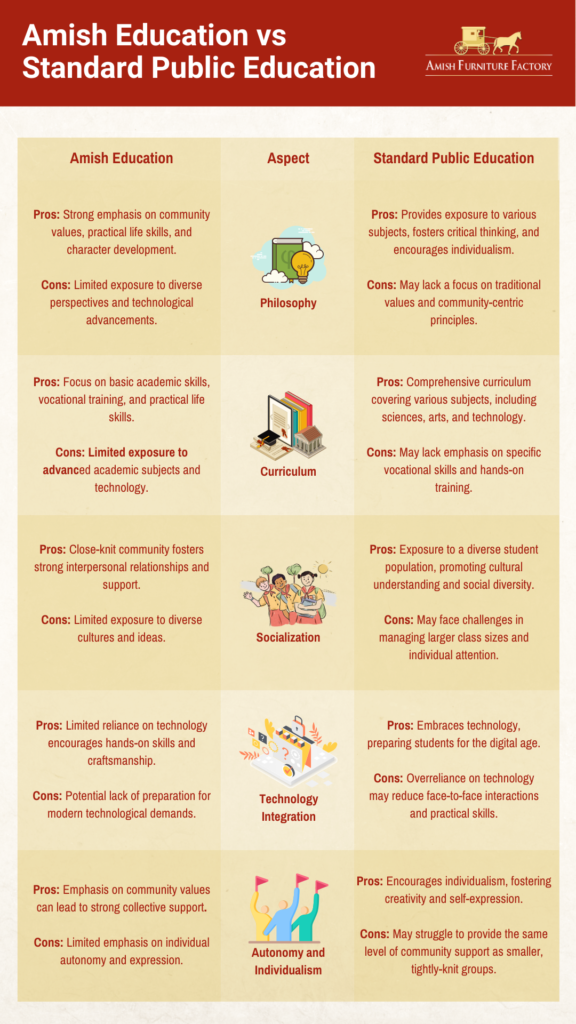
Why Education Matters to the Amish
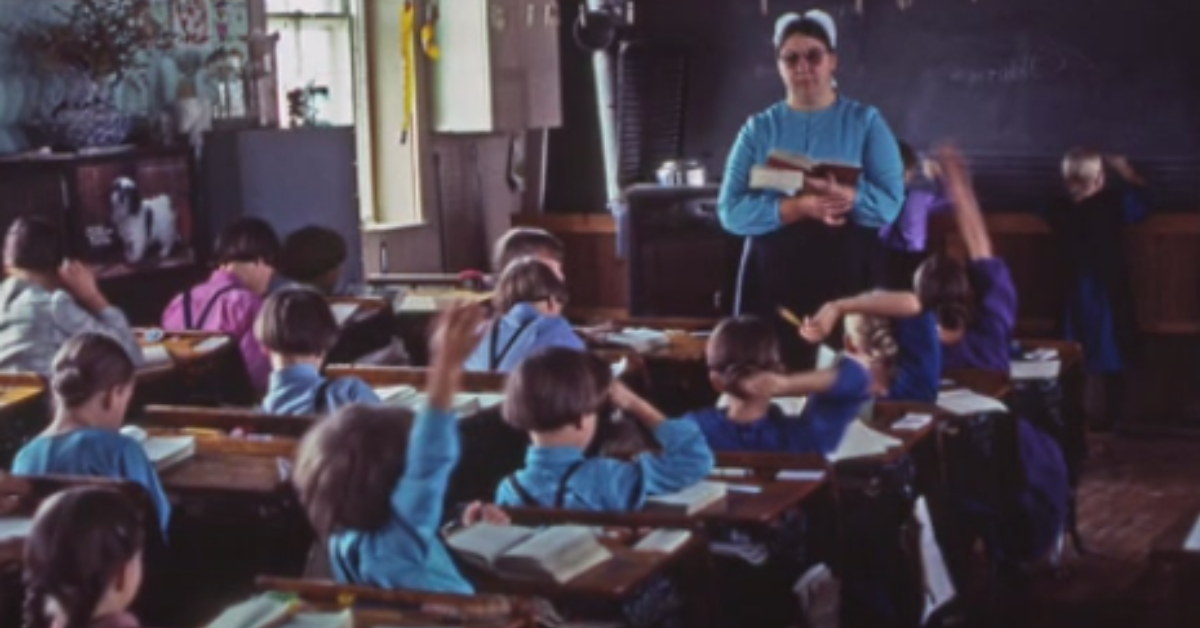
Although many may not realize it, the significance of learning among the Amish community extends far beyond traditional classroom education.
Education matters significantly to the Amish because it is seen as a way to preserve their culture and values. The importance of literacy is emphasized in their educational philosophy, as they believe reading and writing are essential skills for understanding and interpreting their religious texts.
Educational opportunities within the Amish community are focused on practical skills and knowledge that will enable individuals to contribute to their community’s well-being. Children are taught the value of hard work, responsibility, and self-sufficiency from a young age through hands-on experiences in farming, carpentry, cooking, and other trades.
Furthermore, education plays a crucial role in cultural preservation for the Amish. By passing down traditions, language, and customs through formal and informal education settings, they ensure that their way of life continues from one generation to the next. They strive to maintain their unique way of life through educational opportunities rooted in practical skills and knowledge transfer.
Focus of Amish Education
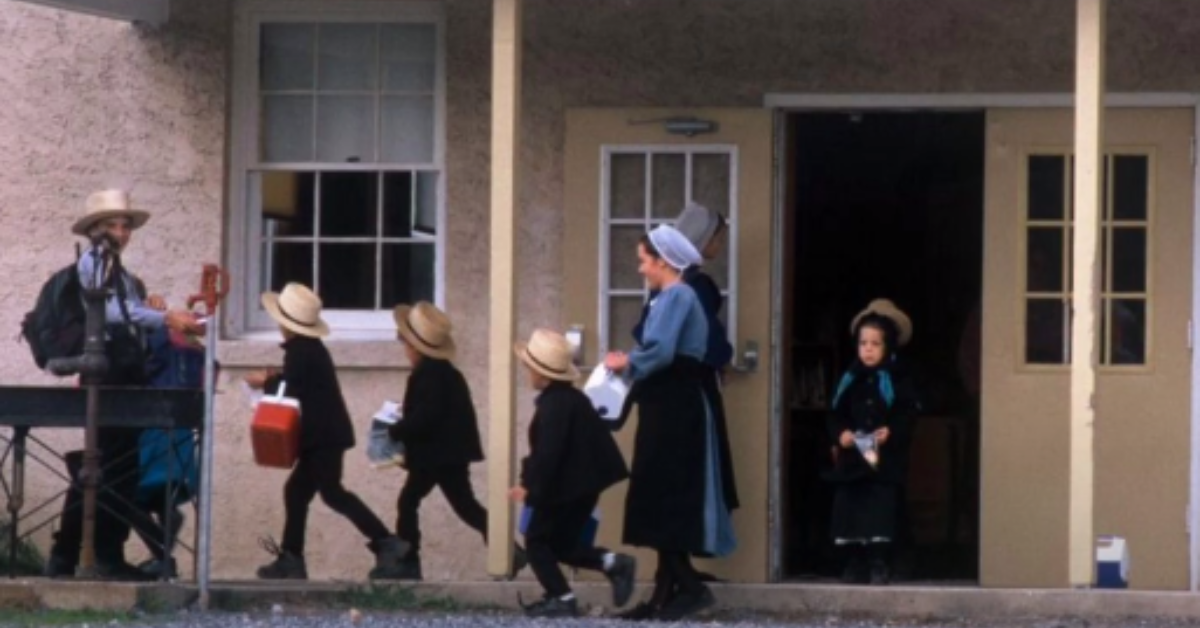
While Amish children are attending school, they’ll learn a variety of skills and information, from history to math lessons. As they progress into some of the later grades, more focus will be placed on learning trades such as cooking, farming, woodworking, etc. Teachers find it important to teach trade skills to the children at an early age so they may contribute to the overall well-being of the community.
Technology, science and the theory of evolution are topics which are omitted from the Amish school system. They believe teaching their children such things will do more harm than good, so they focus on more basic, hands-on topics that will actually be used in the community.
Unlike most large schools located within the city, Amish schools usually only consist of a single room where students go to learn. Depending on the size of the community, there could be as few as 2 or 3 children in a single grade or as many as a dozen.
One of the most notable differences between Amish and traditional schools is how they view teachers. In traditional schools, most parents criticize the methods used by teachers, claiming they’re either trying to teach something that isn’t necessary or simply aren’t doing their job right. Amish communities view their teachers as role models who should be respected and listened to at all times.
The Framework of Amish Education
When it comes to the framework of Amish education, there are several key points to consider.
Length of Amish Schooling
Typically, Amish children only go to school up until the 8th grade. There are always exceptions within each specific community, but most elders believe that children have learned everything they need to by this time. After they’ve finished the 8th grade, they may pursue a career path of their own choosing.
Looking at this from the outside, one may think 8th grade education isn’t enough for children to learn all the necessary principles they need in life. You have to remember, though, Amish lifestyles are more simple and basic than those of the outside society. They don’t rely on modern technology or travel much, so there’s really not a whole lot of “extra” education necessary past the 8th grade.
One-Room Schoolhouses
One unique aspect of Amish schooling is using one-room schoolhouses, where children of different ages and grades learn together.
These schools’ teaching methods are often traditional and focus on hands-on learning. The student-teacher ratio is typically low, allowing for more individualized teacher attention.
Educational resources may be limited compared to larger public schools, but the emphasis is placed on practical skills and community involvement rather than extensive materials.
One-room schoolhouses also promote student diversity as children from various backgrounds come together to learn. Extracurricular activities are not typically offered in these settings due to limited resources and a focus on family and community responsibilities outside school hours.
Despite these differences, the one-room schoolhouse model has successfully provided a well-rounded education within the Amish community.
To get a better understanding of this system, see the video below:
Curriculum and Subjects
To understand the Amish curriculum comprehensively, one must consider the diverse range of subjects and topics covered in their education. The integration of faith and education is a fundamental aspect of Amish schooling.
Alongside traditional subjects such as reading, writing, and mathematics, there is a strong emphasis on teaching religious studies and the values central to their community and family life. Practical skills and vocational training also play a significant role in Amish education.
Students learn trades such as woodworking, farming, cooking, and sewing, which prepare them for future employment and reinforce their self-sufficiency and connection to their agrarian lifestyle. However, challenges and controversies arise when balancing modern educational requirements with preserving Amish traditions. Finding a balance between practical skills and academic knowledge remains an ongoing debate within the Amish community.
Teachers and Roles
When considering the role of teachers within the Amish community, it becomes evident that their responsibilities extend far beyond simply imparting knowledge. Teachers in Amish schools play a crucial role in shaping their students’ future by teaching academic subjects and instilling important values and traditions.
The pedagogical methods employed by Amish teachers emphasize hands-on learning, practical skills, and a strong focus on moral development.
In Amish classrooms, the student-teacher ratio is often low, allowing for more individualized attention and fostering close relationships between teachers and students.
Teacher training within the Amish community typically involves apprenticeships where experienced educators mentor aspiring teachers. This ensures that new teachers are well-prepared to handle classroom dynamics and effectively communicate with their students.
The dedication and commitment displayed by Amish teachers go beyond traditional educational roles, as they actively contribute to nurturing an environment of belonging and community among their students.
Now, how do Amish communities pick their teachers?
Language and Communication Used
Language development among the Amish primarily focuses on cultural immersion and oral tradition. Since technology limitations restrict their use of modern communication tools, face-to-face interactions are crucial in transmitting knowledge and values.
The Amish emphasize clear and concise verbal communication to ensure everyone understands each other effectively. Additionally, nonverbal communication, such as gestures and body language, is significant in conveying meaning within the community.
This emphasis on verbal and nonverbal communication fosters a strong sense of belonging among members as they rely on these shared methods to express themselves authentically within their cultural context.
Challenges and Controversies in Amish Education
Despite Amish education’s challenges and controversies, it remains an integral part of their unique cultural identity. The Amish community faces several obstacles when providing education for their children.
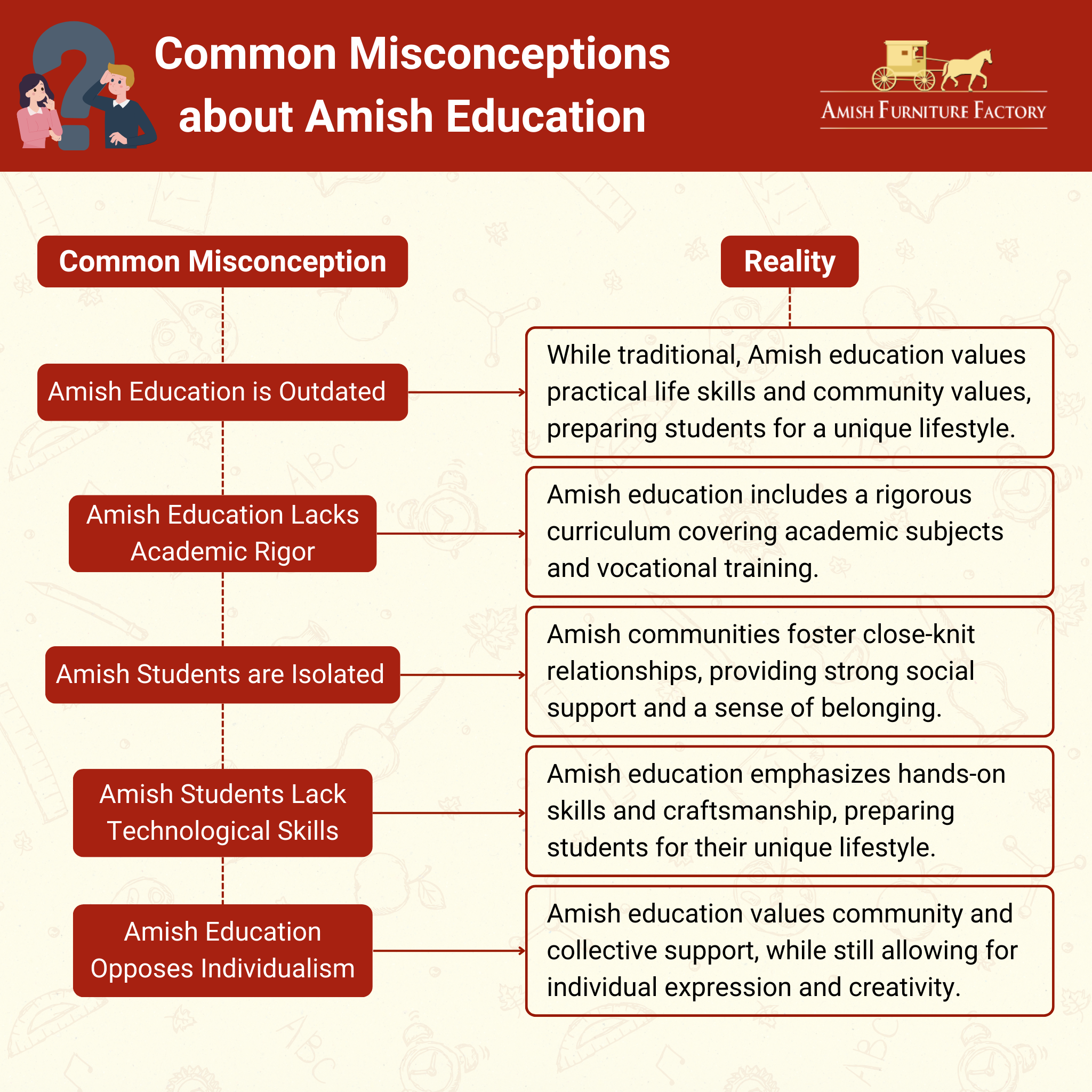
One challenge is the limited resources available in rural areas where most Amish settlements are located. This can make providing a comprehensive education that meets modern standards difficult. Additionally, there is controversy surrounding the emphasis on vocational training in Amish schools. Some argue that this limits educational opportunities and hinders social mobility for Amish youth.
However, these challenges do not diminish the importance of Amish education within their community values. Education plays a crucial role in preserving their way of life and passing down traditional skills and values from one generation to the next. It provides a means for young members to learn practical skills necessary for self-sufficiency and contributing to their community.
Despite concerns raised by outsiders, many Amish parents value the vocational training offered in their schools as it aligns with their agricultural lifestyle and prepares students for future roles within their community.
Ultimately, while there may be ongoing debates about certain aspects of Amish education, it continues to be an essential cornerstone of their cultural identity, ensuring that they maintain their unique way of life for generations to come.
Conclusion
Education is vital to the Amish community despite the traditional lifestyle and resistance to modern technology.
Their focus on practical skills and character development ensures that children are prepared for their future roles as contributing members of society. However, challenges and controversies surrounding issues such as standardized testing and higher education continue to shape the landscape of Amish education.
It is a delicate balance between preserving traditions and adapting to the changing world.
